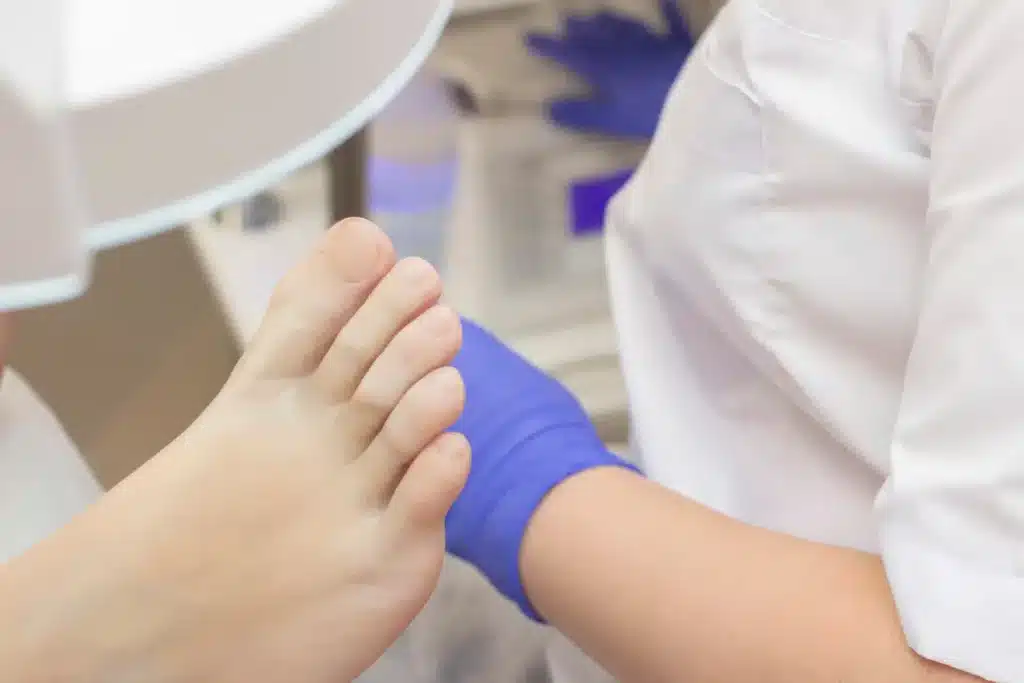For individuals living with diabetes, foot health is a critical part of overall care. Elevated blood sugar levels can damage nerves and blood vessels over time, especially in the lower limbs. This often results in reduced sensation, slowed wound healing, and a higher risk for infection. Without regular monitoring, even small issues—like a blister or callus—can escalate into serious complications. That’s why diabetic foot care plays such a central role in preventing avoidable injuries and preserving mobility.
Recognizing Early Warning Signs
One of the challenges in diabetic foot health is how quietly problems can develop. People with nerve damage (peripheral neuropathy) may not notice pain or discomfort, even when sores or cuts appear. Left untreated, these wounds can grow, become infected, and lead to tissue breakdown. In extreme cases, they may require hospitalization or even amputation. Early signs to look for include redness, swelling, temperature changes, skin discoloration, numbness, and changes in foot shape or nail appearance. These changes often go unnoticed without intentional daily foot checks.
Preventing Pressure and Injury
A major focus of diabetic foot care is reducing friction, pressure, and trauma to the feet. Proper footwear is the first step. Shoes should fit well, support the arches, and provide a cushioned sole. Many patients benefit from specially designed diabetic shoes or inserts that minimize pressure points and protect sensitive areas. Regularly trimming toenails and treating calluses can also prevent future injuries, as can avoiding walking barefoot. These simple preventive steps create a safer environment for the feet and reduce the likelihood of skin breakdown.
Poor circulation is another common complication in diabetes. When blood flow is restricted, wounds heal more slowly and tissues become more vulnerable. Diabetic foot care includes practices that support healthy circulation, such as elevating the feet when resting, avoiding prolonged sitting or standing, and engaging in regular low-impact exercise.
Creating a Daily Routine
Consistent foot care is most effective when it becomes a part of daily life. That includes washing and drying the feet thoroughly—especially between the toes—and inspecting the soles and heels each day for cracks, blisters, or signs of infection. Applying unscented moisturizer can help prevent skin from becoming dry or cracked, which also reduces the risk of wounds. Many patients use mirrors or enlist the help of a partner or caregiver to perform these checks, especially if mobility is limited. Pairing such routines with supportive wellness options, like berberine supplement amazon, can further enhance overall health. By building these habits, patients take a proactive role in protecting their health.
Ongoing care often involves coordination between a primary care provider and specialists such as podiatrists or wound care teams. A podiatrist can help manage nail trimming, monitor for structural changes in the feet, and treat early-stage ulcers or infections. In more advanced cases, a wound care specialist may provide debridement, dressings, and advanced therapies that encourage healing. Seeing these providers regularly—rather than only when problems arise—can prevent complications before they begin.
One of the most serious consequences of poor diabetic foot care is amputation. In the United States, diabetes is a leading cause of non-traumatic lower-limb amputation. However, with consistent care, education, and early intervention, this outcome is largely preventable. Studies have shown that routine foot exams and timely treatment of minor wounds can reduce amputation risk by more than 50%. This is why many diabetes care teams emphasize foot screenings at every appointment and encourage patients to report even minor injuries.
Seek Diabetic Foot Care
At its core, diabetic foot care is preventive care. It emphasizes vigilance, small daily habits, and timely intervention to stop serious issues from developing. For those managing diabetes, this care should be integrated into their routine as seamlessly as blood sugar monitoring or medication adherence. With the right tools, support, and medical guidance, individuals with diabetes can take steps today that protect their feet—and their future.







